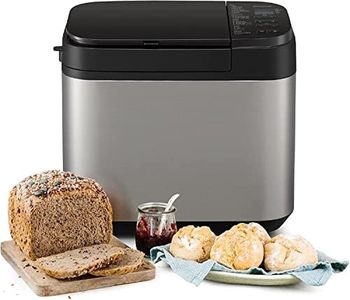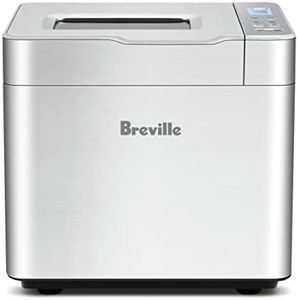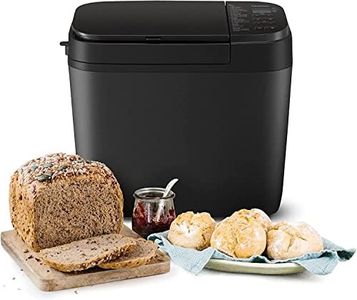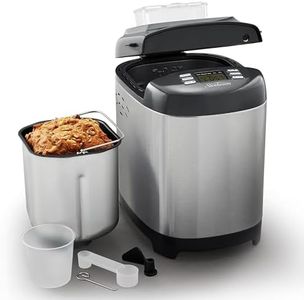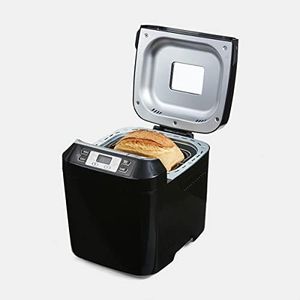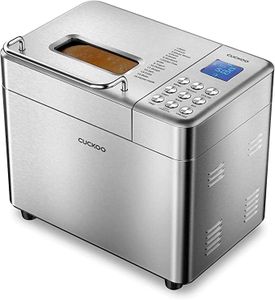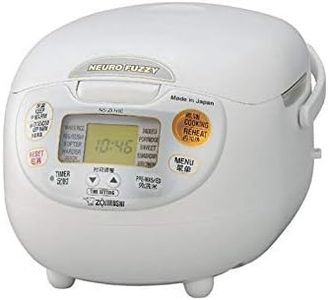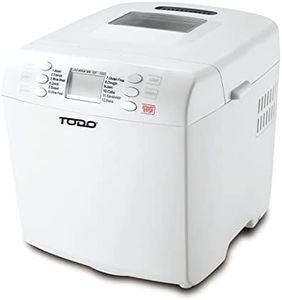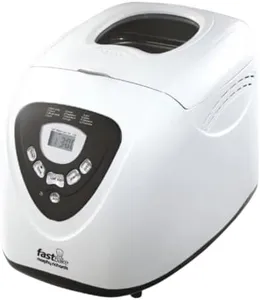We Use CookiesWe use cookies to enhance the security, performance,
functionality and for analytical and promotional activities. By continuing to browse this site you
are agreeing to our privacy policy
10 Best breadmakers
From leading brands and best sellers available on the web.Buying Guide for the Best breadmakers
Choosing the right breadmaker is all about matching the machine’s features and strengths to your bread-making habits and preferences. Whether you’re a total beginner or a regular home baker, understanding what each breadmaker specification means can help you avoid unnecessary extras and find a model that will be easy and enjoyable to use. If you know what kinds of bread you like, how much you want to bake at a time, and how hands-on you want to be, you’re already halfway to your ideal breadmaker.Loaf CapacityLoaf capacity refers to the maximum size of bread the machine can produce, usually measured in grams or pounds. Small capacities are great if you’re baking just for one or two people or like to make fresh bread more frequently. Large capacities suit bigger families or for those who want to bake in bulk. Choosing the right capacity depends on how much bread you typically consume and how often you plan to bake, as a too-large machine for small households can lead to waste, while a too-small one may not keep up with demand.
Number of Pre-Set ProgramsPre-set programs are built-in settings tailored for different types of bread, doughs, or other baked goods. Basic models have just a few, like white, wholewheat, or French bread, while more advanced machines offer programs for everything from gluten-free loaves to jam. More programs give you greater flexibility, but if you mostly want to bake standard bread, a handful of good presets is enough. If you’re adventurous or have dietary needs, extra programs let you experiment and save time.
Crust ControlCrust control lets you adjust how dark or crispy your bread’s crust will be—typically light, medium, or dark. For some, a soft crust is essential, while others love a crunchier finish. If you or your family have strong preferences, this setting is a must-have. If the crust isn’t too important to you, this feature might not make much difference.
Timer/Delay StartA timer or delay start lets you load up ingredients and set the breadmaker to start later, so the bread is ready when you wake up or return home. These usually range from a few hours to over a dozen, allowing flexibility. This feature is especially useful if you want fresh bread in the morning or after work. If you’re baking spontaneously or have time to wait, it may be less important.
Kneading BladesKneading blades mix and knead the dough during the bread-making process. Some machines have a single blade, while others use two for better mixing, especially in larger loaves. Dual blades tend to give a more consistent texture but can be harder to clean. For smaller, standard loaves, a single blade is usually enough, but if you want bigger or heavier doughs, dual blades could be beneficial.
Removable Bread PanThe bread pan is where your bread bakes, and a removable, non-stick pan makes cleaning up much easier. Some pans are also dishwasher safe. If you want hassle-free maintenance and less sticking, this is an important detail. A fixed or sticking pan can make cleaning more of a chore.
Gluten-Free and Specialty OptionsSome breadmakers feature dedicated settings for gluten-free or specialty breads, like rye or sourdough. If you or anyone in your household has dietary restrictions or enjoys trying different recipes, this versatility is key. If you only plan to bake straightforward white or wholemeal loaves, you may not need these extras.
Keep Warm FunctionThe keep warm function automatically keeps your bread warm for a certain period after baking, often up to an hour. This is useful if you can’t get to the bread right when it’s finished baking, keeping it fresh and soft. If you’ll usually be around when the cycle ends, you might not need this, but if your timing varies, it can be a handy feature.
